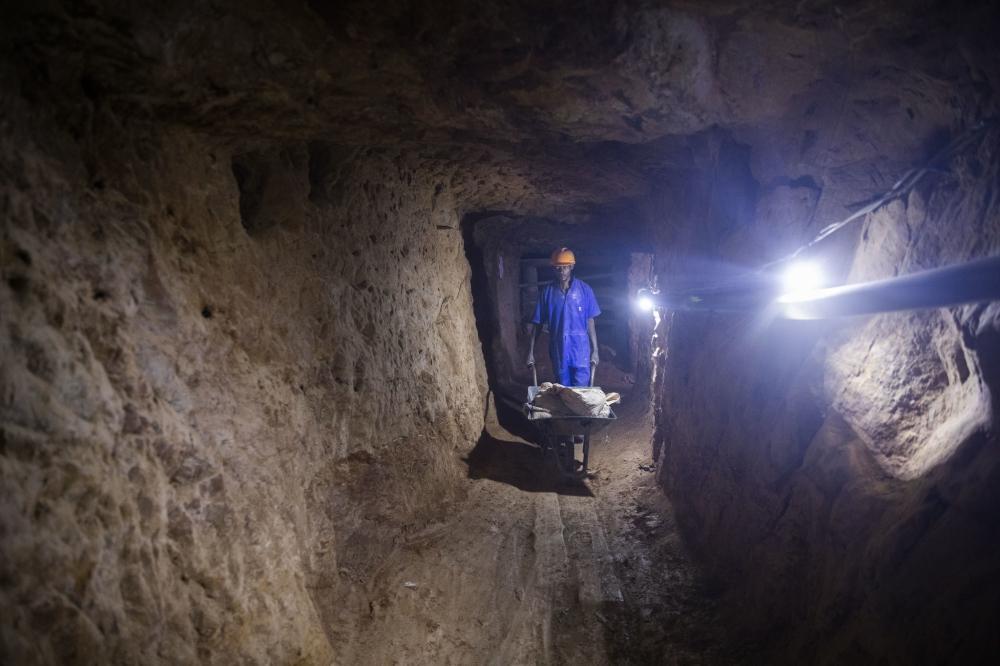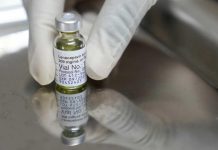Africa-Press – Rwanda. Charles Bray, Executive Chairman of Aterian Plc, has highlighted the significance of the recent discovery of high-grade lithium deposits in Rwanda, describing the findings as “particularly strong” and “world-class.”
Aterian Plc, a UK-based critical minerals exploration company, is part of a joint venture with Rio Tinto Mining and Exploration Ltd and Kinunga Mining Ltd, focused on lithium exploration in Rwanda. Drilling activities began in September 2024 in the Southern Province.
Initial results released last week confirmed the presence of high-grade lithium mineralisation, with drilling revealing concentrations of 3.2 percent lithium over a 3.5-meter interval.
In an interview with The New Times, Bray lauded the quality of the findings, noting that even lithium oxide grades above 1.5 percent are typically considered high quality.
“What we found was 3.2 percent over 3.5 meters, and that’s a real highlight,” he said. “Anything above 3 percent as an intercept for spodumene grade is considered really, really good.”
Spodumene, a pyroxene mineral composed of lithium aluminium inosilicate, is one of the most commercially important sources of lithium.
Bray offered comparisons for context, citing a drill hole at Red Mountain in the United States with a similar grade of 3.2 percent, although over a longer interval of 30 meters. He also referenced an intercept by Patriot Battery Metals showing over 4 percent lithium over nine meters.
“These are two very high-grade intercepts. So, relatively speaking, I think Rwanda’s spodumene potential fits in with some of the best intercepts that have been seen across the world. The question is whether or not Rwanda’s intercepts have the depth to match with those other global records,” he said.
Drilling in Rwanda was conducted on only two of the twelve defined prospect areas by Rio Tinto. One drill hole in particular reached a depth of 174.6 meters and uncovered a 6.9-meter section of lithium-bearing rock grading 2.11 per cent lithium, containing a higher-grade interval of 3.45 metres at 3.20 per cent lithium.
As a result, Rio Tinto announced that it will exercise its Stage 1 earn-in rights under the joint venture agreement, allowing it to own a 51 percent interest in the exploration permit.
“With two drill targets done, 10 to go, there is real, real significant upside potential. So we’re going to follow on and do some different drilling on the zones, and start testing the other targets. Our goal is really to advance towards obtaining a median resource estimate as quickly as we can,” Bray noted.
He praised Rio Tinto for bringing “world-class technical expertise, their incredible operational capabilities, and their huge development platforms” into Rwanda, adding that they are jointly keen to develop the lithium assets in the country.
When asked about the possible timelines for the start of mining operations, Bray said no definitive schedule has been set yet, and it will depend much on Rio Tinto’s broader plans within Rwanda.
Bray also expressed a strong commitment to local value addition, pointing at the importance of involving Rwandans throughout the development process.
The joint venture agreement between Rio Tinto and RMB, signed in 2023, authorized the exploration of lithium and its by-products across a 2,750-hectare area in Rwanda’s Southern Province. The project includes 19 identified pegmatite zones rich in lithium, cesium, and tantalum.
As of July 2024, Rwanda’s mining sector contributed approximately 3 percent to the country’s GDP and employed more than 72,000 people. The sector is projected to have a revenue potential of up to $150 billion.
Lithium plays a critical role in the cathodes of all types of lithium-ion batteries that power EVs, although it is also used in the batteries of laptops and cell phones, as well as in the glass and ceramics industry.
For More News And Analysis About Rwanda Follow Africa-Press






